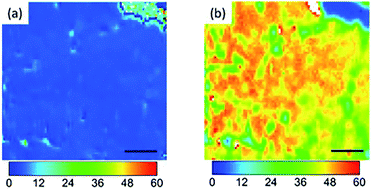Plasma-etched functionalized graphene as a metal-free electrode catalyst in solid acid fuel cells†
Abstract
The Oxygen and nitrogen plasma treatment were applied to produce graphene with abundant edges, oxygen functional groups, and nitrogen doping. The plasma-etched graphene was then used as a metal-free electrocatalyst in a solid acid fuel cell. Scanning electron microscopy, Raman spectroscopy, and X-ray photoelectron spectroscopy were used to characterize the graphene layers. Alternating-current impedance spectroscopy of a hybrid electrode containing the plasma-etched graphene and cesium dihydrogen phosphate as proton-conducting solid acid illustrated its remarkable catalytic activity under cathodic conditions. Thus, both O2 and N2 plasma treatment activated the material. While O2 plasma was a more effective activator than N2 plasma, it also resulted in higher degradation rates. A combination of density functional theory calculations and experimental results indicated that zigzag carbon was the most active site for the oxygen reduction reaction on both O2 and N2 plasma-etched graphene. Furthermore, the armchair carbons adjacent to the surface oxygen groups and doped heteroatoms were also important active sites for O2 and N2 plasma-etched graphene, respectively. The results of this study will guide future endeavors in the development of non-precious metal catalysts for use as fuel cell cathodes.



 Please wait while we load your content...
Please wait while we load your content...